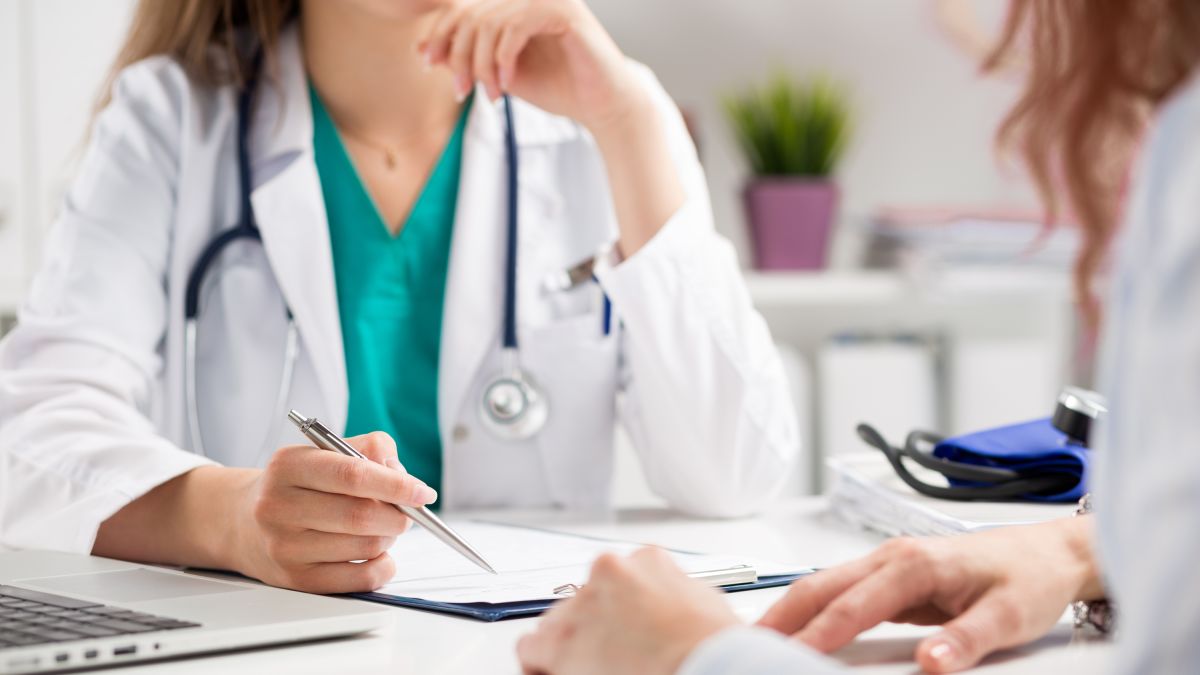Hyperandrogenism
Rating:
Publication date: 22.01.2021
172

ANDROGENS – male sex hormones, are usually produced in the body of both men and women, and a certain part of them is transformed into female sex hormones – estrogens, and a part circulates in the blood both bound to proteins and free. The free fraction of androgens interacts with peripheral receptors and in this way affects the body.
HYPERANDROGENISM – a condition caused by excessive secretion of androgens or their enhanced action.
Appears:
- by greasing the skin and hair,
- with acne-type rashes on the face and back,
- with alopecia (hair loss in the scalp and temples),
- with hirsutism (excessive hair on a woman’s face, chest, abdomen and thighs)
- In severe cases, with virilization (change in tone of voice, masculine build, hypertrophy of the clitoris)
HYPERANDROGENIC CONDITIONS ARE mostly a manifestation of some endocrine diseases and are often accompanied by various disorders of the menstrual cycle, excess body weight and infertility, and sometimes it is a sign of a serious disease, such as an androgen-producing tumor, which often develops in women aged 45 to 55 years.
The female body produces androgens in the ovaries and adrenal glands. The process of hormone production in these organs is controlled by the higher centers of the brain. Therefore, hyperandrogenism can be of different origins: ovarian, adrenal, and central nervous system. In each case, the treatment is carried out by a different method, so it is important to have a purposeful clinical-laboratory examination and the correct interpretation of the examination results by a highly qualified clinician.
Diseases accompanied by hyperandrogenism:
1. Police Ovary S-mi
2. Adrenogenital S-Mi
3. Hyperprolactinemia
4. Hypothyroidism
5. Cushing’s disease and syndrome
6. Acromegaly
7. Androgen-producing tumors of ovaries and adrenal glands.
8. Liver diseases
Polycystic ovary syndrome is the most common among women of reproductive age
It is characterized by:
1. With irregular and rare menstruation (sometimes regular)
2. With hyperandrogenism
3. with obesity (but not always)
4. With the presence of multiple fine liquid inclusions (follicles) in the ovaries, which indicates anovulatory cycles.
Symptoms often appear during puberty with the onset of menstruation, and sometimes appear later after weight gain.
The exact cause of the disease is unknown, but there are factors that can play a role in the development of the disease:
EXCESSIVE SECRETION OF INSULIN – insulin is a hormone that is produced in the pancreas and helps the cells to absorb glucose. If the cells are resistant to insulin, the level of glucose in the blood increases, accordingly, the pancreas releases more insulin to convert glucose, and the accumulated insulin in the blood increases the secretion of androgens, which prevents the maturation of follicles and ovulation.
HEREDITY – some studies have shown that there is a gene that is associated with this disease
EXCESSIVE SECRETION OF ANDROGENS – the ovaries produce a large amount of androgens, which is followed by anovulation.
COMPLICATIONS THAT MAY RESULT FROM THIS DISEASE:
- Infertility
- Gestational diabetes and hypertension
- Spontaneous abortion or premature birth.
- Non-alcoholic steatohepatitis – inflammation of the liver caused by fatty liver.
- Metabolic syndrome – high blood pressure, hyperglycemia, dyslipidemia, which increases the risk of developing cardiovascular diseases.
- Type 2 diabetes
- sleep apnea (shortness of breath)
- Depression, anxiety, disordered eating behavior
- Bleeding from the uterus
- Endometrial cancer
When should we consult a doctor?
If the interval between periods exceeds 35 days, you have infrequent or excessive and prolonged periods against the background of an irregular cycle.
. You have acne-type rashes on your face and back, greasy hair,
Obesity on the face, chest, around the nipples of the mammary glands, on the abdomen and thighs,
.Excess weight
.and at the same time pregnancy does not occur
TO MAKE AN APPOINTMENT WITH A DOCTOR, CONTACT US:
TEL: 2 99 08 53
HIS: CHACHAVA 1 / LJUBLJANA 5



